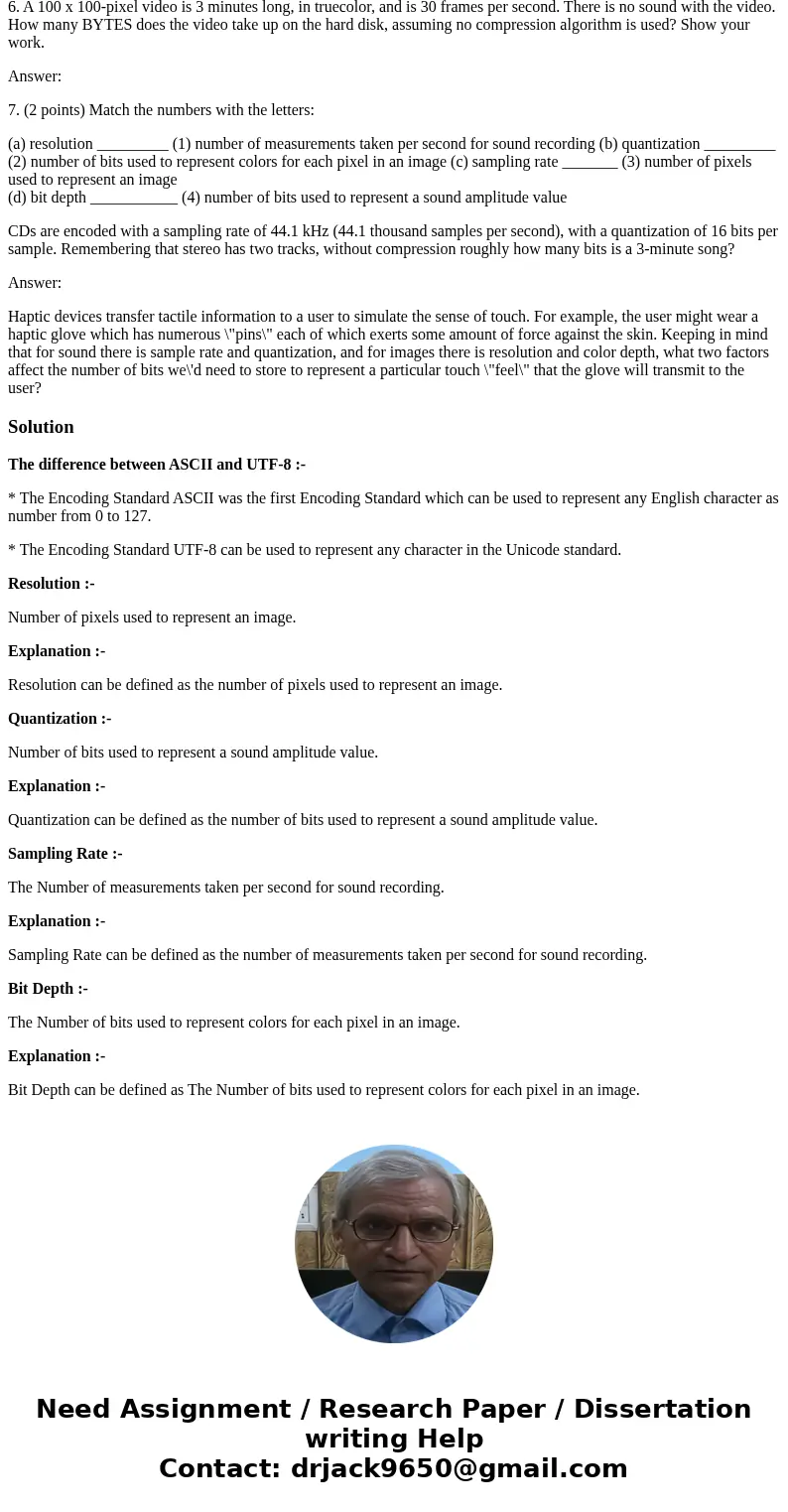The bible has about 4000000 letters special characters perio
The bible has about 4,000,000 letters, special characters (period, commas, ...), and spaces. How many electronic copies of the bible can be stored in secondary storage whose size is 1 Terabyte? Show our work. That is show how you calculated the number.
Answer:
The U of I library just obtained its 11 millionth volume. The head of the library would like to store all of these books on a hard drive. Suppose on average, a volume is p pages long, with w words per page, and c characters per word.
(a) Write a formula indicating the number of bytes of storage needed ignoring the space needed for special characters such as period, colon, and semicolon.
Answer:
(b) Make and state reasonable assumptions for the values of p, w, and c, determine how large of a hard drive would be necessary.
Answer:
Briefly, state the difference between ASCII and UTF-8. Answer:
What is the representation of “Illini Hall” in UTF-8 and in ASCII (see e.g. http://www.fileformat.info/info/charset/UTF-8/list.htm)
Answer:
5. What is the UTF-8 representation of “ all” in UTF-8 ? Answer:
6. A 100 x 100-pixel video is 3 minutes long, in truecolor, and is 30 frames per second. There is no sound with the video. How many BYTES does the video take up on the hard disk, assuming no compression algorithm is used? Show your work.
Answer:
7. (2 points) Match the numbers with the letters:
(a) resolution _________ (1) number of measurements taken per second for sound recording (b) quantization _________ (2) number of bits used to represent colors for each pixel in an image (c) sampling rate _______ (3) number of pixels used to represent an image
(d) bit depth ___________ (4) number of bits used to represent a sound amplitude value
CDs are encoded with a sampling rate of 44.1 kHz (44.1 thousand samples per second), with a quantization of 16 bits per sample. Remembering that stereo has two tracks, without compression roughly how many bits is a 3-minute song?
Answer:
Haptic devices transfer tactile information to a user to simulate the sense of touch. For example, the user might wear a haptic glove which has numerous \"pins\" each of which exerts some amount of force against the skin. Keeping in mind that for sound there is sample rate and quantization, and for images there is resolution and color depth, what two factors affect the number of bits we\'d need to store to represent a particular touch \"feel\" that the glove will transmit to the user?
Solution
The difference between ASCII and UTF-8 :-
* The Encoding Standard ASCII was the first Encoding Standard which can be used to represent any English character as number from 0 to 127.
* The Encoding Standard UTF-8 can be used to represent any character in the Unicode standard.
Resolution :-
Number of pixels used to represent an image.
Explanation :-
Resolution can be defined as the number of pixels used to represent an image.
Quantization :-
Number of bits used to represent a sound amplitude value.
Explanation :-
Quantization can be defined as the number of bits used to represent a sound amplitude value.
Sampling Rate :-
The Number of measurements taken per second for sound recording.
Explanation :-
Sampling Rate can be defined as the number of measurements taken per second for sound recording.
Bit Depth :-
The Number of bits used to represent colors for each pixel in an image.
Explanation :-
Bit Depth can be defined as The Number of bits used to represent colors for each pixel in an image.


 Homework Sourse
Homework Sourse